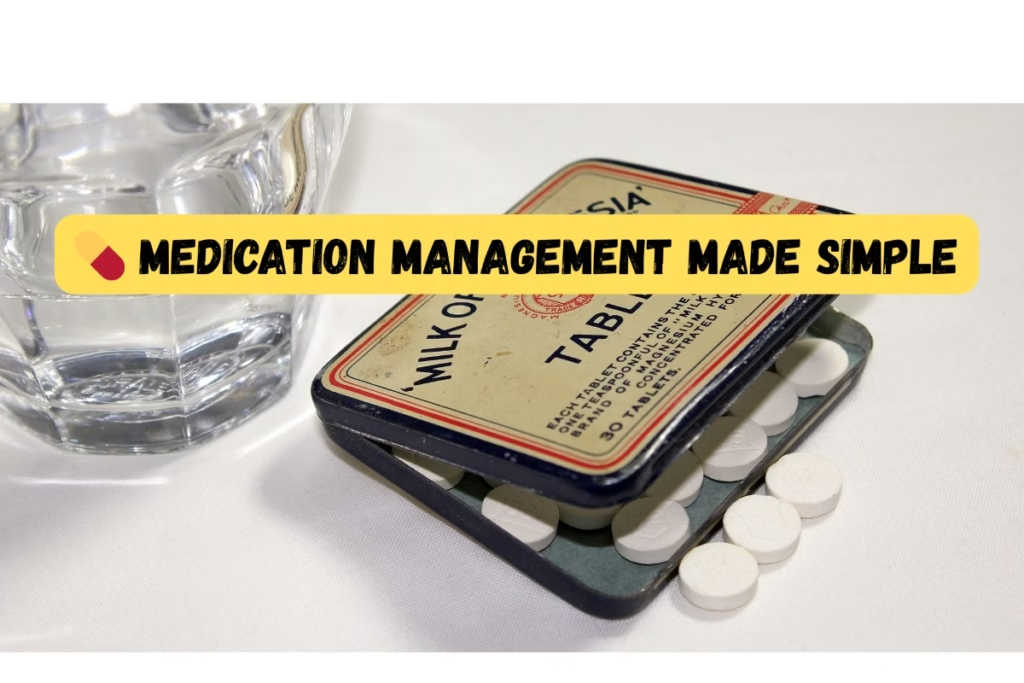When a loved one requires long-term care, many families face the complex process of a Medicaid spend-down. Understanding and navigating this financial transition can be challenging for caregivers.
1. Navigating the Basics of Medicaid Spend-Down
Understanding the Medicaid Spend-Down Process
The Medicaid Spend-Down process is akin to a financial pathway to Medicaid eligibility for those who initially exceed the program’s financial thresholds. Conceptually, it involves reducing one’s income or assets to fall within Medicaid’s stipulated limits, thereby becoming eligible for benefits. This process enables individuals with higher incomes or assets—who still require significant medical care and assistance—to access the necessary aid without being disqualified due to their financial situation.
Eligibility Requirements for Medicaid Spend-Down
To initiate a Medicaid Spend-Down, an individual must have medical expenses high enough that when subtracted from their income, their remaining income meets Medicaid’s eligibility criteria. The specific thresholds and how spend-down is calculated can vary by state, so applicants must understand the regulations in their region. Required documentation typically includes proof of medical expenses, income, and assets.
The Difference Between Income and Asset Spend-Downs
It’s essential to distinguish between income and asset spend-down. An income spend-down involves reducing monthly or periodic income by paying medical bills to reach Medicaid’s income cap. Meanwhile, an asset spend-down requires spending down savings and assets, such as stocks or property (excluding the primary residence), to bring the total below the asset threshold. This might involve paying off debt, prepaying funeral expenses, or purchasing eligible Medicaid spend-down items.
As policies vary from state to state, a practical caregiver guide to Medicaid spend-down can be an invaluable tool in navigating these complex matters. When considering a spend-down, always consult with a Medicaid planning professional to ensure compliance with state-specific regulations and safeguard the patient’s or loved one’s best interests.
Remember, the ultimate goal of the Medicaid Spend-Down process is to provide aid to those in need while respecting the program’s eligibility requirements. Careful planning can make this a viable option for those facing the dual challenges of high medical costs and financial constraints.
2. Steps in Preparing for Medicaid Spend-Down
Assessing Your Loved One’s Financial Situation
Before beginning the Medicaid spend-down process, it’s essential to take a comprehensive look at your loved one’s finances. This includes evaluating all assets, income sources, debts, and expenses. Documentation will be key—be prepared to gather bank statements, insurance policies, investment records, and any real estate deeds. An accurate assessment will not only provide a clear financial picture but also determine eligibility and inform the strategy for effectively proceeding with the spend-down.
Crucial Legal Documents for Spend-Down Planning
Legal preparations are a cornerstone of the caregiver guide to Medicaid spend-down processes. Essential documents include a durable power of attorney, which allows a chosen individual to make decisions on behalf of your loved one, and a living will, outlining the person’s healthcare preferences if they can no longer communicate. Additionally, explore setting up a trust that might offer certain asset protections while aligning with Medicaid regulations. Properly managing these documents will help navigate the complex spend-down journey smoothly.
Consulting with a Medicaid Planning Expert
Given the intricacies of Medicaid rules and the potential impact on your loved one’s finances and care, seeking professional guidance is highly advisable. A Medicaid planning expert—often an elder law attorney—can provide invaluable assistance. They will help interpret the regulations, suggest strategies to protect assets legally, and ensure that all actions comply with current laws and regulations. Expert advice can mean the difference between a successful application and an unnecessary denial of benefits.
By focusing on these crucial steps, you can approach Medicaid spend-down with a well-structured plan, increasing the chances of securing the necessary care for your loved one while preserving their dignity and quality of life.
3. Strategic Financial Management for Medicaid Spend-Down
How to Spend Down Assets Responsibly
Managing assets is critical for individuals looking to qualify for Medicaid. Some may need to reduce their countable resources, a process known as a Medicaid Spend-Down, to meet the eligibility criteria.
When considering a spend-down, it’s crucial to approach it with a strategy. Consider using funds for necessities such as paying off debts, purchasing medical equipment you require, or making home modifications to improve accessibility. This helps with Medicaid eligibility and ensures assets are used for practical and essential needs.
Gifting and Transfer Rules Under Medicaid Consideration
A common misconception is that you can give away assets to meet Medicaid’s asset limit. However, Medicaid has stringent gifting and transfer rules. Any significant asset transfer or gift can trigger a penalty period if not done in compliance with Medicaid regulations.
Therefore, it’s vital to understand the rules surrounding gifting, which limit the ability to give away assets without incurring penalties. Transfers should be handled with care, and in many cases, it’s wise to consult with a financial advisor or attorney specializing in elder law before making significant changes to asset ownership.
Understanding Penalties and Look-Back Periods
Medicaid uses a look-back period to scrutinize asset transfers in the years before the application. This means that Medicaid typically reviews financial transactions within the past 60 months to check for disqualified transfers.
If a disqualifying transfer is found, it may result in a penalty period, during which the applicant is ineligible for Medicaid benefits. The duration of the penalty period is calculated based on the amount of transferred assets. Consequently, strategic financial planning within Medicaid regulations is essential.
Concluding Advice
The process of spending down to become eligible for Medicaid can be complex.
Always consult professional advisors to navigate these rules, and be mindful of the impact each financial decision may have on Medicaid eligibility. Bold steps taken now will help secure the best care for the future.
4. Preserving Family Assets While Navigating Spend-Down
Understanding Exempt vs. Non-Exempt Assets in Medicaid Spend-Down
When preparing for Medicaid spend-down, it’s crucial to understand the distinction between exempt and non-exempt assets. Exempt assets generally include a primary residence, one vehicle, personal belongings, and funeral trusts, which are not counted when determining Medicaid eligibility. Conversely, non-exempt assets, like savings accounts, stocks, and additional properties, must often be spent or converted into exempt assets to meet Medicaid’s asset threshold.
Protecting the Community Spouse’s Financial Health
Spousal impoverishment rules prevent the financial depletion of the non-applicant spouse, often referred to as the community spouse. These regulations allow the community spouse to retain a certain amount of the couple’s assets and income, known as the Community Spouse Resource Allowance (CSRA). It ensures that while one spouse qualifies for Medicaid, the other still has sufficient resources to maintain an adequate standard of living.
Purchasing Medicaid-Compliant Annuities
A strategy for preserving family assets includes investing in Medicaid-compliant annuities. These financial products can convert non-exempt assets into income for the community spouse, protecting those funds from the spend-down process. However, it is vital to ensure that any annuity purchased meets Medicaid’s requirements, such as being irrevocable and actuarially sound, to avoid jeopardizing Medicaid eligibility.
A caregiver’s guide to Medicaid spend-down can be an invaluable resource in navigating the complexities of Medicaid eligibility requirements. By understanding the nuances of asset classification and utilizing legitimate protections, such as CSRA or Medicaid-compliant annuities, caregivers can effectively safeguard their family’s assets while ensuring their loved ones receive the care they need.
5. Life After Spend-Down: Ensuring Quality Care
Maintaining Your Loved One’s Lifestyle Post-Spend-Down
After a Medicaid spend-down is complete, preserving the quality of life for your loved one is crucial. This requires thoughtful planning to meet their personal preferences and needs. For instance, if they enjoy outdoor activities or have favorite hobbies, look for care settings that can accommodate these interests. Additionally, consider the social aspects of their lifestyle and ensure they’ll have opportunities for interaction and community involvement.
Selecting the Right Long-Term Care Facility
Choosing a long-term care facility post-spend-down is a critical decision that impacts your loved one’s well-being. Research and visit potential facilities to ensure they offer high-quality care and a suitable environment. Look for a place with a strong reputation, skilled caregivers, and various activities. Evaluate the staff-to-resident ratio and check for proper accreditation. It’s essential that the facility meets medical needs and provides a comfortable and engaging atmosphere.
Accessibility for family visits and the location’s proximity to friends and other loved ones can be significant factors in determining a place’s appeal. A setting that allows easy interaction with familiar faces can help maintain emotional health and a sense of connection.
Staying Involved in Your Loved One’s Care Plan
Even after your loved one is settled into a facility, your role as a caregiver doesn’t end. Stay actively involved in the care planning process. Attend care meetings, ask questions, and advocate for your loved one’s needs and preferences. Ongoing communication with the care team is essential to tailor the care plan to your loved one’s evolving needs. This partnership with healthcare providers plays a vital role in ensuring the continuity and quality of care.
Your input can bring valuable insights to the care team, as you are often the most familiar with your loved one’s history, wishes, and personality. Regular visits and check-ins can help you monitor their care and well-being, enabling you to address any concerns promptly.
Navigating the complexities of a Medicaid spend-down and ensuring sustainable, high-quality care thereafter is worthwhile. A Caregiver Guide to Medicaid Spend-Down can offer additional guidance on the transition to Medicaid-covered care, helping to secure comfort and dignity for your loved one in the next chapter of their life.
6. Emotional and Logistic Support for Caregivers
Joining Support Groups for Caregivers Navigating Medicaid
When faced with the complexities of Medicaid spend-down, connecting with a support group can be a compass in a sea of confusion. These groups provide a platform to share experiences, learn from peers, and receive advice on navigating the Medicaid system effectively. Encountering others in similar situations fosters a sense of community and helps caregivers gain valuable insight and strategies to manage their responsibilities.
Managing the Emotional Toll of Financial Caregiving
Caring for a loved one involves more than just addressing their physical needs. The financial aspect of caregiving, particularly when it involves Medicaid spend-down, can take a significant emotional toll. Caregivers must recognize the importance of self-care and seeking emotional support. This can include consulting mental health professionals, engaging in stress-relief activities, and ensuring they take breaks to maintain their well-being.
Acknowledging feelings of overwhelm, guilt, or stress and addressing them proactively is vital. By doing so, caregivers can maintain their emotional well-being, ensuring they can provide the best possible care for their loved ones.
Utilizing Community Resources to Ease Caregiver Burden
Tapping into community resources can be incredibly beneficial in alleviating the burden of the Medicaid spend-down process. Many local organizations offer financial counseling, legal aid, and respite care to give caregivers a much-needed break. Utilizing these resources can significantly reduce caregivers’ stress and administrative load.
Embracing community support saves caregivers time and energy, which can be redirected toward providing quality care and nurturing their relationships with their loved ones. In addition, these resources often provide information and assistance that can make the caregiver’s guide to Medicaid spend-down much more approachable and less daunting.
Remember, seeking support, managing emotions, and utilizing available resources are vital to managing the demands of being a caregiver. These proactive steps can improve the caregiving experience for both the caregiver and the recipient.
Essential Insight: While the Medicaid spend-down process is filled with regulations and can be quite daunting, it is designed to ensure that those in need have access to necessary long-term care services.


